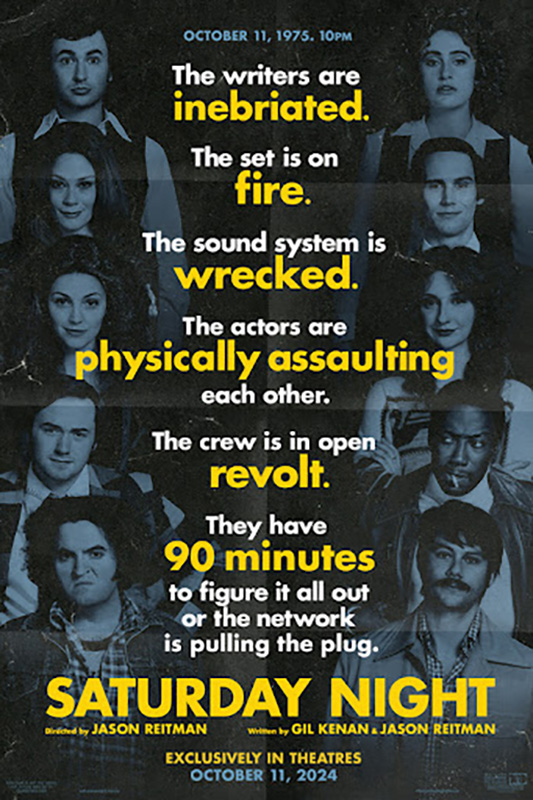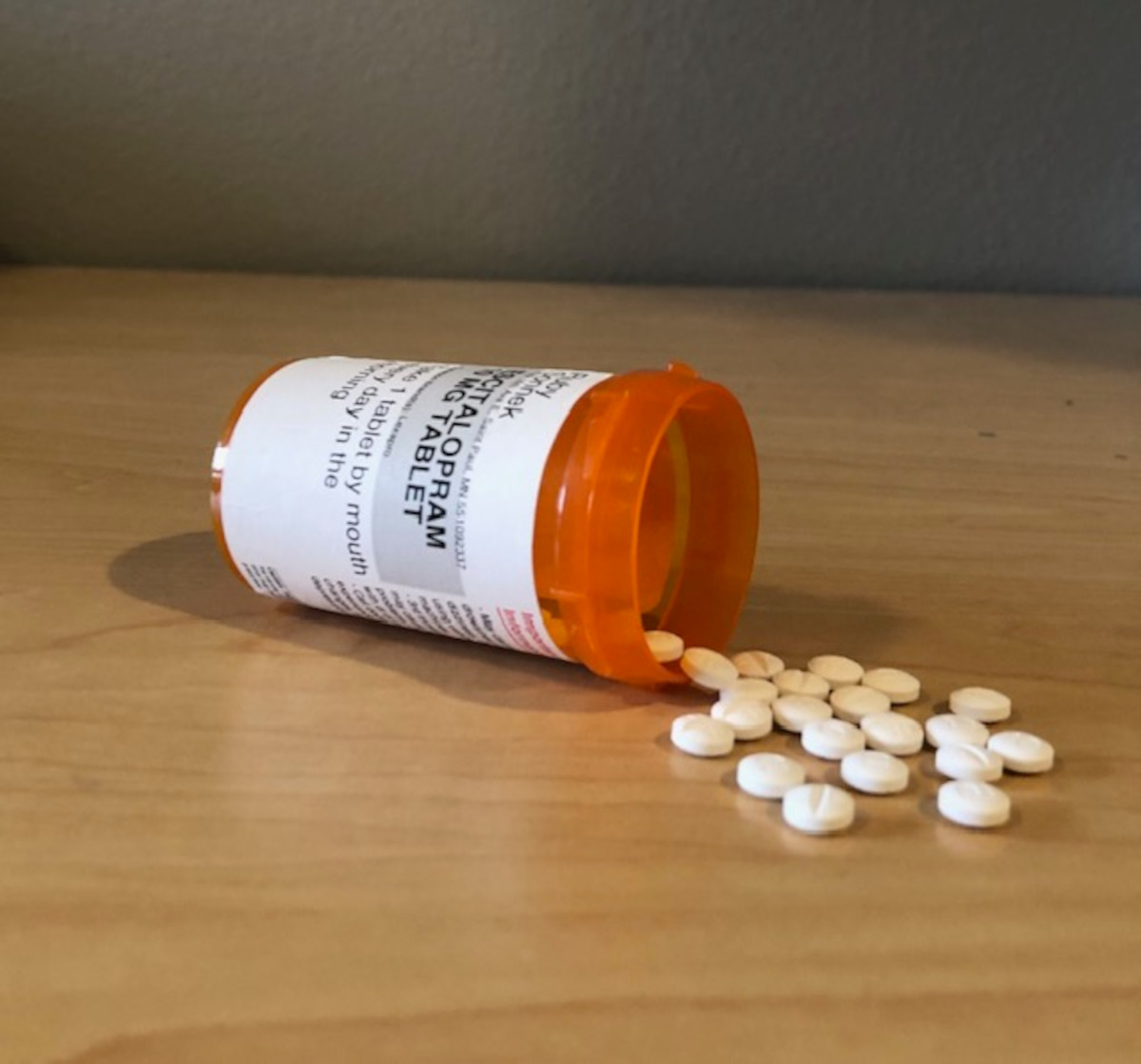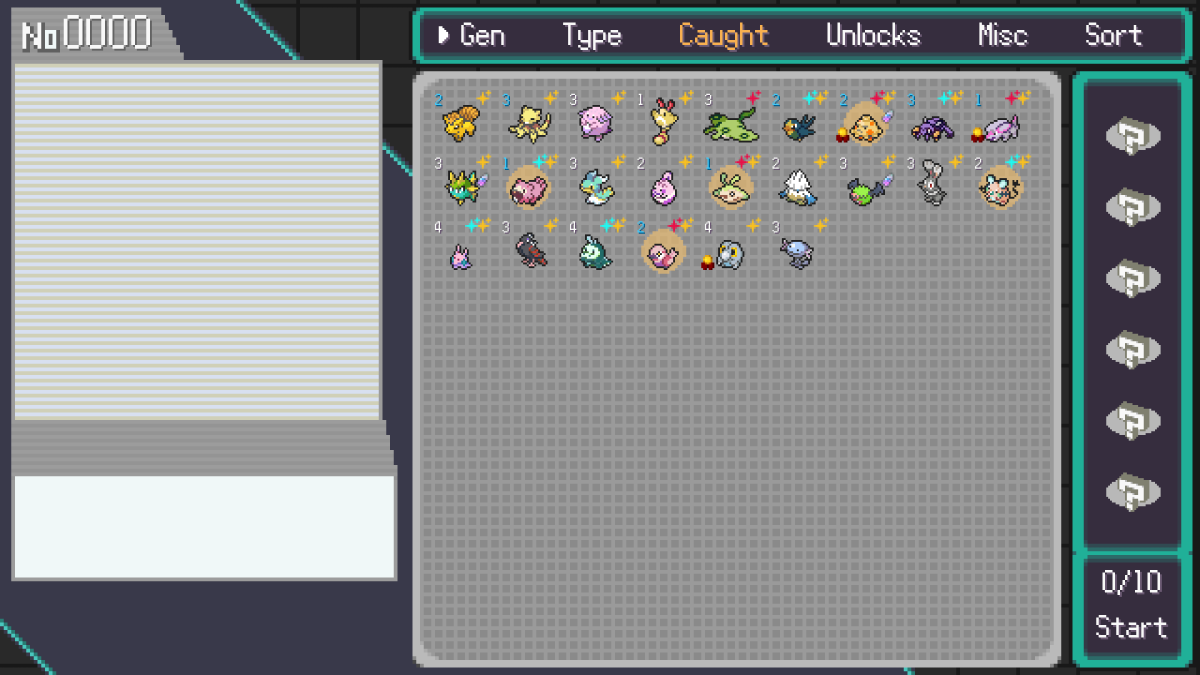I visited my hometown this past weekend and like clockwork, my family gathered in the living room to watch the newest episode of “Saturday Night Live.”
My father grew up watching the sketch comedy and variety show, and vividly recalls “SNL” promoting its 15th season. Subsequently, my teenage years and early adulthood were marked by watching “Weekend Update” and an ever-changing slate of comedic hosts and musical guests.
My favorite monologues — whether I was familiar with the host or not — have always been when the camera would follow the host backstage, bumping into cast members and even creator and producer Lorne Michaels if they’re lucky.
An example of this is Shelley Duvall’s May 14, 1977, cold open and monologue (more on the infamous bumblebee costume she wears later).
Jason Reitman’s “Saturday Night” (2024) takes audiences backstage to the final (and partially fictionalized) moments leading up to its inaugural show on Oct. 11, 1975, where everything is going wrong and Michaels (portrayed by Gabriel LaBelle) doesn’t know if he will have a show to air.
As the movie poster says, “The writers are inebriated. The set is on fire. The sound system is wrecked. The actors are physically assaulting each other. The crew is in open revolt. They have 90 minutes to figure it all out or the network is pulling the plug.”
You would think it would be hard for the audience to suspend the disbelief that “SNL” — now in its 50th season — almost didn’t air, but Reitman and the ensemble cast did a great job of building intensity.
During this era in late-night television, “The Tonight Show Starring Johnny Carson” slot was at 11:30 p.m. EDT Mondays through Fridays with reruns on the weekends. Johnny Carson wanted to air new content on the weekend slots too but was in a contract dispute with NBC executives.
“Saturday Night” frames Oct. 11 as Michaels’ only opportunity to get his show broadcasted.
Most of the intensity comes from the movie’s pacing. The plot takes place during the 90 minutes before the show’s 11:30 p.m. slot time. I didn’t realize the narrative would take place over such a short period of time, but I’m a fan of this scope of storytelling — think “Before Sunrise” (1995), “12 Angry Men” (1957) or “1917” (2019).
It’s been a while since I’ve seen a true cast ensemble that plays off each other well, but “Saturday Night” exceeds expectations here. I’m impressed with casting director John Papsidera’s balance of finding skilled comedy actors who also look remarkably like the original “SNL” cast members.
I was patiently waiting for Rachel Sennott to appear on screen as “SNL” writer Rosie Shuster. Sennott has cemented herself as one of my favorite actors and I consider this movie to be part of the “Ayo and Rachel are Single” Cinematic Universe, or AARASCU for short, named after Ayo Edebiri and Sennott’s limited Comedy Central series.
I have adored pretty much everything in the AARASCU, meaning any movies and television shows Sennott and Edebiri act in — loose parameters, I know — but “Saturday Night” is no exception.
It seems the cast and crew run into issues at every turn, with Labelle’s Michaels spending most of the movie stressing over if cast member John Belushi (Matt Wood) will sign his contract before the show airs. In the movie, Belushi didn’t want to wear the bumblebee costume for a sketch (“Bee Hospital”) and had issues working alongside Chevy Chase (Cory Michael Smith).
There is a truly heartfelt moment when Wood’s Belushi runs off set 20 minutes before the air time and skates at the Rockefeller Center ice rink in his bumblebee costume. The movie takes a number of creative liberties and according to Time Magazine, this moment likely did not happen.
In an interview with Time, about this choice Reitman said “I was deeply interested in Belushi’s vulnerability and fears about going on live television — how that would change his life and how that would define him from then on.”
I did, however, find a photo taken of Belushi skating in his bumblebee costume at the Rockefeller Center by photographer Owen Franken at some point in 1975, but not necessarily Oct. 11. It’s hard to tell if Belushi is fearful about this new chapter of his life or simply disinterested, but either way I think it’s an incredibly captivating and beautiful photo of the late actor.
Unfortunately, it is not in The Spectator’s budget to buy licensing for a photo just because I love its use of bokeh (a creative use of blur) and I don’t want Getty Images to come after me, so redirecting you to look up Franken’s photo will just have to do.
NBC executives didn’t like “Bee Hospital” but unfortunately for Belushi, who supposedly did hate the costume, Michaels used the bee skits as a recurring joke to defy the network.
Belushi would end up wearing the costume in a number of “SNL” sketches, even in “I’m a King Bee” with Dan Aykroyd (portrayed in the movie by Dylan O’Brien) that would later pave the way for their movie “The Blues Brothers” (1980).
If this movie was all a ploy by NBC to get me to watch the first episode of “SNL,” then it worked and I’m not upset by it. I left the theater, wrote my one-liner on Letterboxd and then immediately watched the debut episode.
Growing up with a political scientist as a father meant I was shown George Carlin’s “Seven Words You Can Never Say on Television” during my formative years to learn about First Amendment freedoms, so Carlin being the first “SNL” host was a pleasant surprise.
Reitman and co-writer Gil Kenan could have written the script to include a recreation of the entire first episode instead of just the first sketch, and I would have happily sat through it.
But in an era of Hollywood where audiences are constantly asking for sequels and prequels (and studios are more than happy to profit off that), it was nice to scratch that “SNL” itch by watching the source material instead of waiting for yet another movie installment.
Kasper can be reached at [email protected]. Follow her on Letterboxd.














